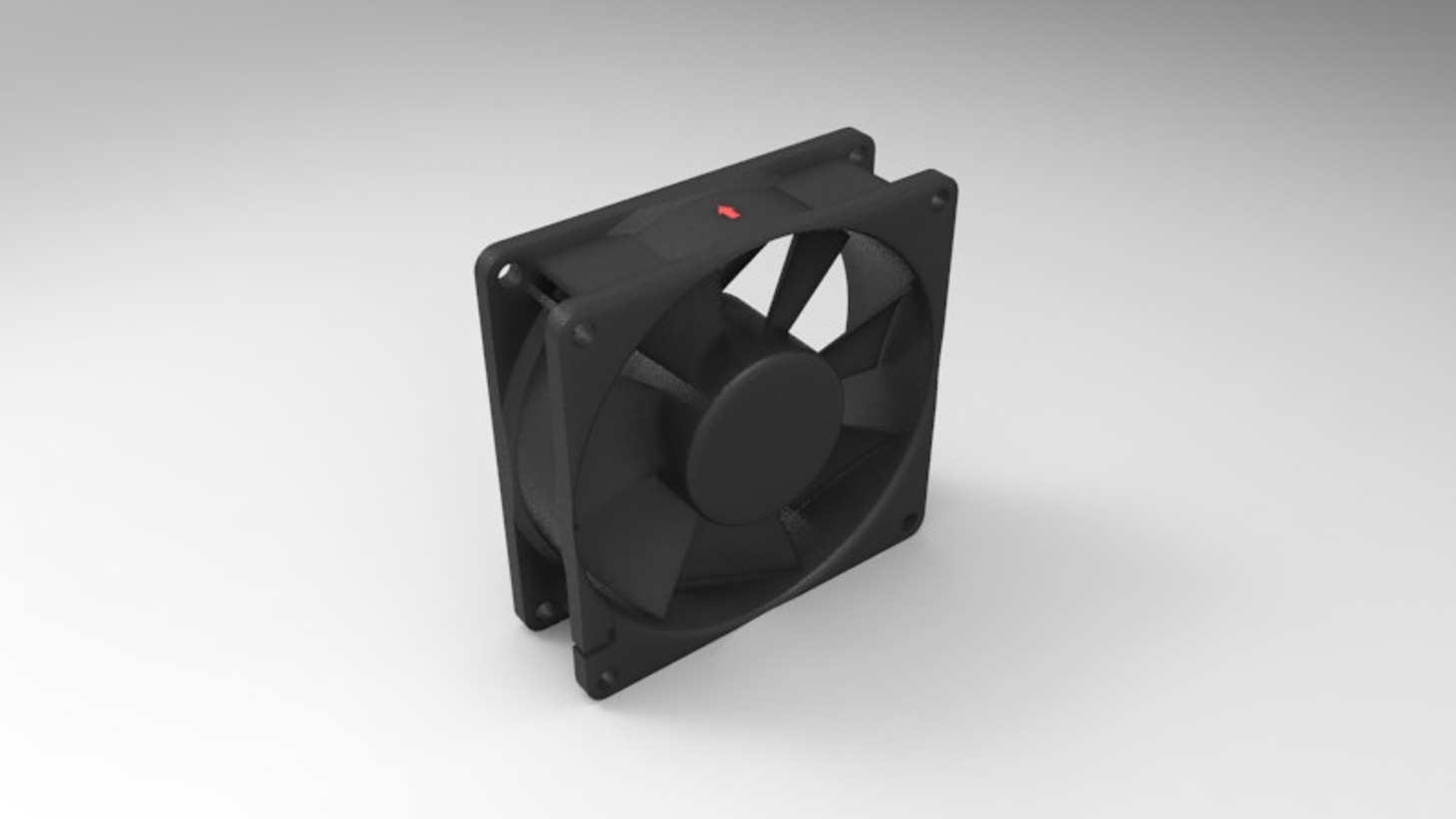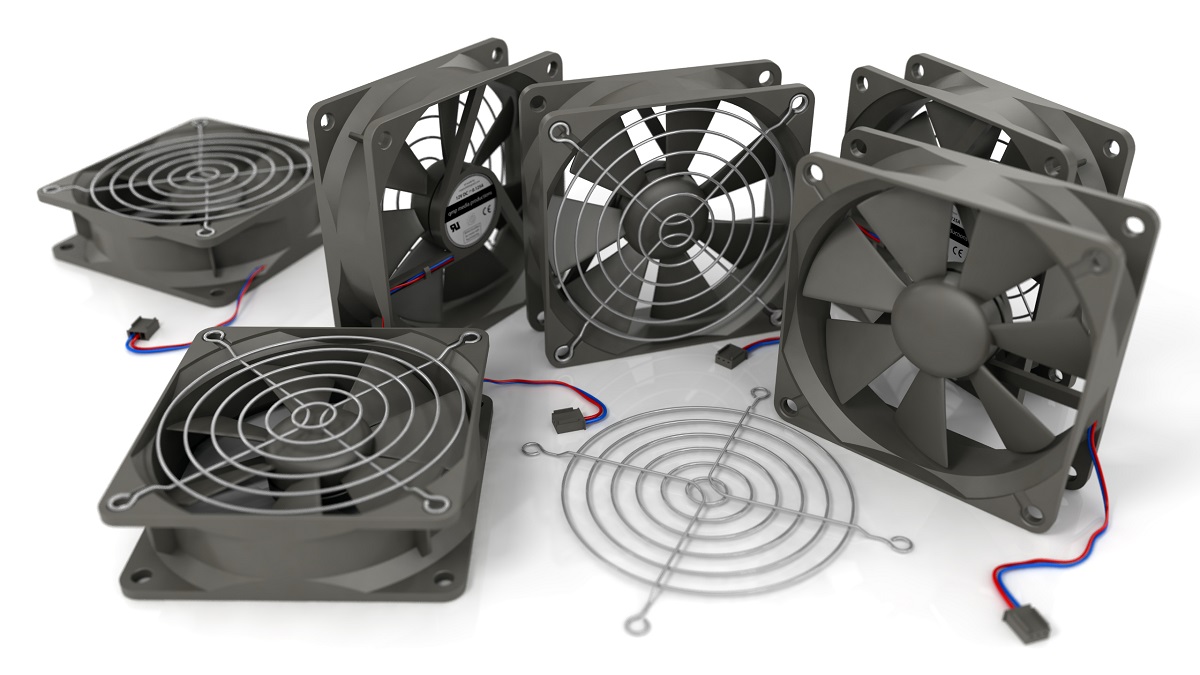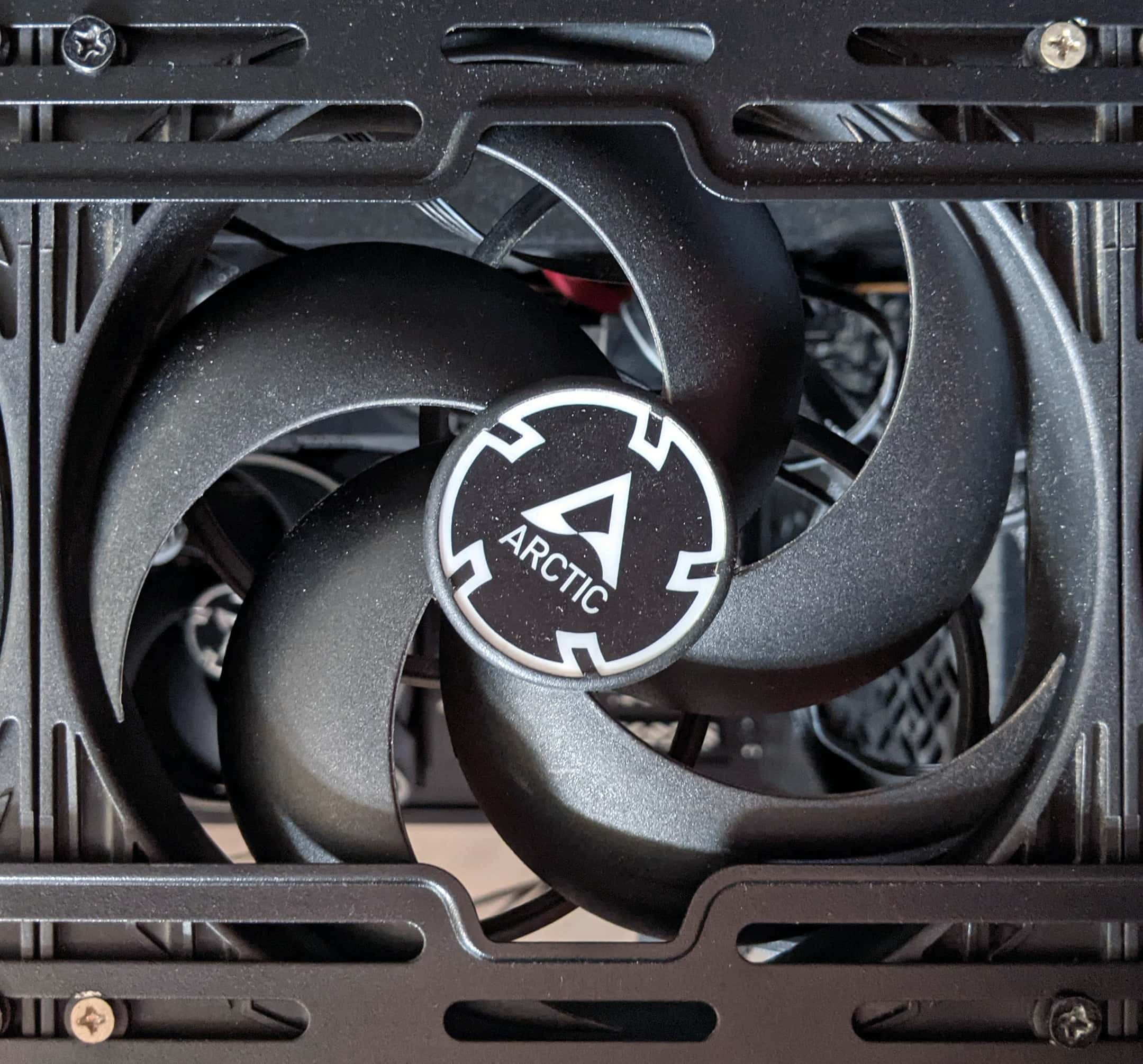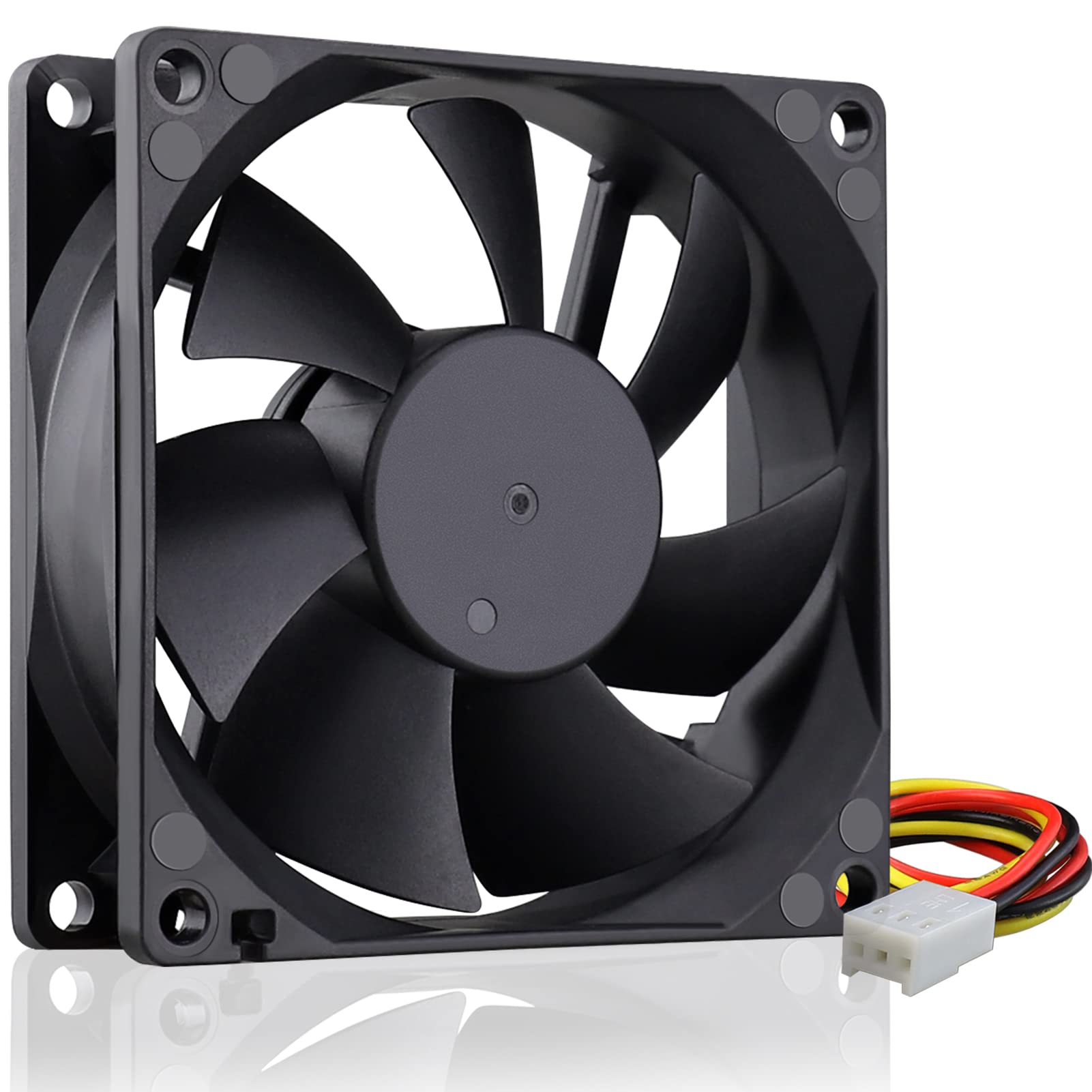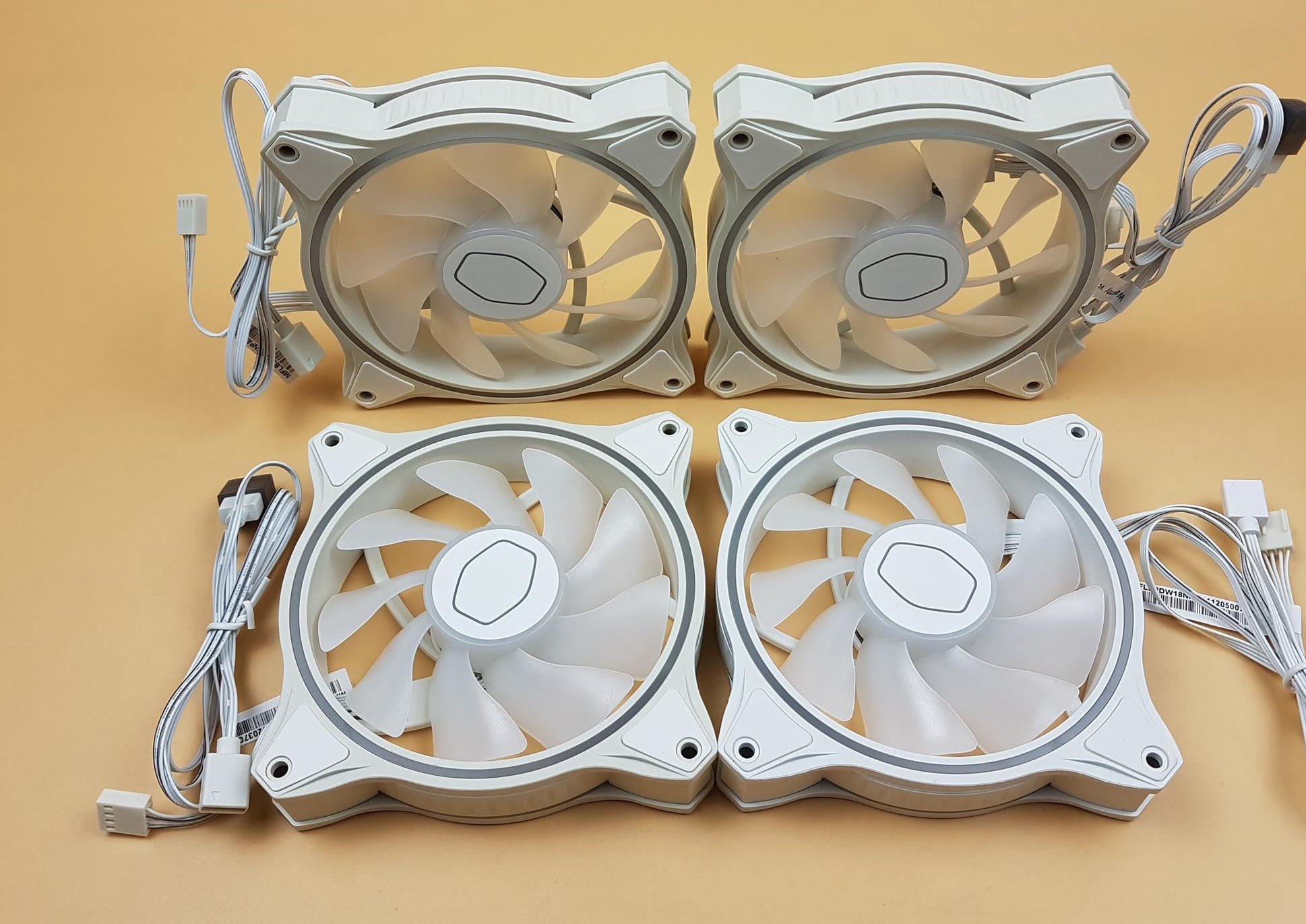Introduction
Welcome to the world of 80mm case fans! These small but powerful devices play a crucial role in maintaining the optimal temperature of your computer system. Whether you’re a gaming enthusiast, a content creator, or simply someone who needs their computer to perform at its best, understanding the importance and functionality of 80mm case fans is essential.
When it comes to computer hardware, heat is the enemy. Excessive heat can lead to system instability, decreased performance, and even permanent damage to your components. This is where case fans come into play. They are designed to circulate the air inside your computer case, expelling the hot air and bringing in cool air to keep your system running smoothly.
80mm case fans are a popular choice for many computer enthusiasts due to their compact size and versatile applications. Despite their small form factor, these fans have the ability to move a substantial amount of air, ensuring effective cooling for your valuable components.
In this article, we will delve into the world of 80mm case fans, exploring their features, advantages, and considerations when choosing one for your system. Whether you’re building a new PC, upgrading your existing system, or simply looking to optimize cooling performance, this guide will provide you with the knowledge you need to make informed decisions.
So, let’s dive in and discover everything you need to know about 80mm case fans and how they can benefit your computer system!
What is a Case Fan?
A case fan, also known as a cooling fan or system fan, is a vital component of a computer system. It is a small electric fan that is mounted inside the computer case to provide airflow and cool the internal components. The main purpose of a case fan is to dissipate heat generated by the CPU, GPU, power supply, and other components, thus preventing overheating and ensuring system stability.
Case fans work by drawing cooler air into the computer case and expelling hot air out. They typically have blades or impellers that rotate at high speeds, creating airflow that moves across the components and carries away the heat. This continuous circulation of air helps to maintain safe operating temperatures and prolong the lifespan of the hardware.
There are different sizes of case fans available, ranging from the larger 120mm and 140mm fans to the smaller 80mm fans. The choice of fan size depends on factors such as the computer case’s dimensions, available mounting points, and cooling requirements.
In addition to cooling, case fans also contribute to reducing the noise level of the system. By improving airflow and dissipating heat efficiently, they prevent components from overheating and running at higher speeds, which can result in increased fan noise. This makes case fans an essential component for both performance-oriented systems and those that prioritize quiet operation.
It is worth noting that some computer cases come with pre-installed fans, while others may have additional fan mounts for customization. Case fans are generally connected to the motherboard or a dedicated fan controller using a 3-pin or 4-pin connector. This allows the fan speed to be controlled based on the system’s temperature, either through the motherboard’s BIOS or software utilities.
Now that we understand what a case fan is and its fundamental purpose, let’s delve deeper into the world of 80mm case fans and explore their specific features and advantages.
Why Do You Need a Case Fan?
Having a case fan in your computer system is crucial for several reasons. Let’s explore why you need a case fan:
Heat Dissipation: One of the main reasons for having a case fan is to dissipate heat generated by the internal components of your computer. CPUs, GPUs, and other high-performance parts can produce a significant amount of heat under heavy workloads. Without proper cooling, this heat can build up and cause damage to your components or lead to system instability. A case fan helps expel hot air and bring in cooler air, regulating the temperature inside the case and ensuring that your system runs smoothly.
Improved Performance: Overheating can negatively impact the performance of your computer. When components reach their maximum operating temperatures, they may throttle their speed or even shut down to prevent damage. This can significantly reduce the performance of your system, especially during resource-intensive tasks such as gaming, video editing, or running demanding software. By keeping temperatures in check, a case fan allows your components to operate at their full potential, ensuring optimal performance.
Extended Lifespan: Excessive heat can significantly decrease the lifespan of your computer components. High temperatures can cause accelerated wear and tear, leading to component failures and reduced reliability. By maintaining a cool and stable environment, a case fan helps prolong the lifespan of your hardware, saving you the cost and hassle of frequent replacements.
Prevention of Thermal Throttling: Some processors and graphics cards have built-in thermal throttling mechanisms. These mechanisms automatically reduce the clock speed of the component when temperatures rise above a certain threshold. While this helps prevent overheating, it can result in reduced performance. By incorporating a case fan, you can prevent or minimize thermal throttling, allowing your components to operate at their optimal speeds.
Reduced Noise: As mentioned earlier, case fans can contribute to reducing the noise level of your system. By properly cooling your components and preventing them from running at high temperatures, you can avoid the need for your fans to run at maximum speeds. This leads to quieter operation and a more pleasant computing experience.
Flexibility and Customization: Having a case fan gives you the flexibility to customize and upgrade your cooling solution. You can add additional fans, change their positions, or even opt for more advanced cooling solutions such as liquid cooling. This allows you to tailor your cooling setup based on the specific needs of your system and the level of performance you require.
With these significant benefits in mind, it is clear that having a case fan is essential for maintaining the health, performance, and longevity of your computer system. Now that we understand the importance of case fans in general, let’s dive into the details of 80mm case fans and what sets them apart from others on the market.
Understanding 80mm Case Fans
When it comes to case fans, there are various sizes available to suit different system configurations. One popular size is the 80mm case fan. So, what exactly is an 80mm case fan and how does it differ from others?
An 80mm case fan refers to the dimensions of the fan itself. It measures 80mm in length and width, making it relatively small compared to larger fans such as 120mm or 140mm. Despite its compact size, an 80mm case fan can still provide effective cooling for your system.
Due to their smaller size, 80mm case fans are often used in compact computer cases or in situations where space is limited. They are commonly found in small form factor PCs, HTPCs (Home Theater PCs), and low-profile cases. Additionally, 80mm case fans are versatile and can be installed as intake fans, exhaust fans, or even on CPU coolers for enhanced cooling performance.
One key advantage of 80mm case fans is their ability to generate high airflow despite their small size. While they may not move as much air as larger fans, they can still provide a decent amount of air circulation within your system, effectively cooling critical components.
Another important factor to consider when looking at 80mm case fans is their noise level. Due to their smaller blades and higher rotational speeds, 80mm fans tend to produce more noise compared to larger fans. However, this can vary depending on the specific fan model and design. Manufacturers often offer quiet or low-noise options for those who prioritize a quieter computing experience.
It’s worth noting that the performance of an 80mm case fan can also be influenced by factors such as airflow direction, fan placement, fan speed, and the overall cooling setup of your system. Proper placement and configuration can maximize the effectiveness of the fan and ensure efficient cooling.
In summary, understanding 80mm case fans involves recognizing their small size, versatility, and ability to provide adequate airflow and cooling for compact or low-profile computer systems. Now that we have an overview of 80mm case fans, let’s explore the features and specifications that are important to consider when choosing one for your system.
Features and Specifications of 80mm Case Fans
When choosing an 80mm case fan for your system, it’s important to consider the specific features and specifications that will suit your cooling needs. Let’s take a closer look at some of the key factors to consider:
Airflow: The airflow of a case fan refers to the amount of air it can move within a given time. It is measured in cubic feet per minute (CFM) or cubic meters per hour (m³/h). A higher airflow generally indicates better cooling performance. Look for an 80mm case fan with a decent CFM rating to ensure sufficient air circulation in your system.
Noise Level: Noise level is an important consideration, especially if you prioritize a quiet computing experience. The noise level of a fan is measured in decibels (dB). Look for fans that have a low noise level rating or specifically marketed as “silent” or “quiet” fans. Quieter fans typically have larger, optimized fan blades and advanced motor designs to reduce noise while maintaining efficient cooling.
Fan Speed: Fan speed is measured in revolutions per minute (RPM). It determines how fast the fan blades rotate. Higher RPM typically correlates with increased airflow but also results in higher noise levels. Look for fans that strike a balance between airflow and noise by offering variable fan speed control options.
Connector Type: The connector type determines how the fan is connected to your system. Common connector types for 80mm case fans include 3-pin and 4-pin connectors. A 3-pin connector provides basic functionality with speed control options available through the motherboard or fan controller. A 4-pin connector, also known as a PWM connector, allows for more precise fan speed control and can be particularly useful for users who want to fine-tune their cooling setup.
Bearing Type: The bearing type determines the fan’s durability, noise level, and lifespan. Common bearing types for case fans include sleeve bearings, ball bearings, and fluid dynamic bearings (FDB). Ball bearings generally offer longer lifespans and better resistance to vibration, while fluid dynamic bearings provide improved performance and lower noise levels compared to sleeve bearings.
RGB Lighting: If aesthetics are important to you, consider whether you want an 80mm case fan with RGB lighting. RGB fans allow you to customize the lighting effects and colors to match your system’s theme or personal preference. However, keep in mind that RGB fans may come at a higher price point and may require additional software or hardware to control the lighting.
These features and specifications play a crucial role in determining the overall performance, noise level, and compatibility of an 80mm case fan. Take the time to research and compare different options to find the fan that best suits your cooling requirements and preferences.
Now that we have explored the features and specifications of 80mm case fans, let’s move on to the advantages of using these fans in your system.
Advantages of Using 80mm Case Fans
Despite their smaller size, 80mm case fans offer several advantages when it comes to cooling your system. Let’s explore the advantages of using these fans:
Compact Size: The compact size of 80mm case fans makes them ideal for small form factor builds or situations where space is limited. These fans can fit comfortably in compact computer cases, HTPCs, or any system where larger fans may not be suitable. With their small footprint, 80mm fans offer flexibility when it comes to placement and configuration.
Effective Cooling: Despite their smaller dimensions, 80mm case fans are still capable of providing effective cooling for your system. Their high rotational speeds and optimized fan blade designs allow them to move a decent amount of air, helping to dissipate heat and maintain safe operating temperatures for your components. This makes them an excellent choice for cooling compact systems that may have limited airflow or restricted cooling options.
Versatility: 80mm case fans are versatile and can be used in various cooling configurations. They can serve as intake or exhaust fans, or even be mounted on CPU coolers to enhance cooling performance. This flexibility allows you to customize your cooling setup based on the specific needs of your system, ensuring optimal airflow and cooling solutions.
Quieter Operation: While smaller fans tend to produce more noise due to their higher rotational speeds, many 80mm case fans are designed with noise reduction in mind. Manufacturers often offer models with optimized blade designs and advanced bearing technologies to minimize noise levels. Choosing fans with lower noise ratings can help create a quieter computing environment, ensuring a more enjoyable and undisturbed experience.
Cost-Effective Solution: 80mm case fans are typically more affordable compared to larger fans. This makes them a cost-effective solution for those on a budget or looking for efficient cooling without breaking the bank. They provide a balance between performance and price, making them accessible to a wide range of users.
With their compact size, versatility, and ability to deliver effective cooling, 80mm case fans offer several advantages for those looking to optimize their system’s temperature management. Whether you’re building a small form factor PC or have limited space in your current setup, these fans can provide a reliable and efficient cooling solution.
Now that we’ve explored the advantages of using 80mm case fans, let’s move on to the considerations you should keep in mind when choosing one for your system.
Considerations When Choosing an 80mm Case Fan
When selecting an 80mm case fan for your system, it’s important to consider several factors to ensure optimal cooling performance. Let’s explore the key considerations you should keep in mind:
Airflow and Static Pressure: Consider the airflow and static pressure performance of the fan. The airflow determines how much air the fan can move, while static pressure measures its ability to push air through restricted spaces, such as radiator fins or dense heatsinks. Depending on your system’s cooling requirements, prioritize fans with a balance between airflow and static pressure, ensuring efficient cooling for your components.
Noise Level: Pay attention to the noise level produced by the fan. While smaller fans tend to generate more noise due to higher rotational speeds, look for models specifically marketed as quiet or designed with noise reduction features. Fans with optimized blade designs or advanced bearing technologies can help minimize noise levels, providing a more peaceful computing experience.
Bearing Type: Consider the bearing type of the fan. Common bearing types include sleeve bearings, ball bearings, and fluid dynamic bearings (FDB). Sleeve bearings are cost-effective but may have shorter lifespans and higher noise levels. Ball bearings offer increased durability and better resistance to vibration. FDB bearings provide improved performance and reduced noise. Choose a fan with a bearing type that matches your desired balance between performance, noise, and longevity.
Fan Speed and Control: Look for fans with adjustable fan speed control options. This allows you to fine-tune the fan’s RPM according to your cooling needs. Fans with a 4-pin connector (PWM) provide more precise speed control via the motherboard or a dedicated fan controller, while 3-pin fans offer basic speed control through voltage regulation.
Connectors and Compatibility: Ensure the fan has the appropriate connector type for your system. Most 80mm case fans come with either 3-pin or 4-pin connectors. Check the compatibility of the connector with your motherboard or fan controller to ensure proper functionality and control over the fan speed.
Build Quality and Durability: Consider the overall build quality and durability of the fan. Look for reputable brands known for their reliable products. Pay attention to factors such as the quality of the fan housing, fan blades, and the general construction to ensure the fan can withstand long-term use without failures or performance issues.
RGB Lighting and Aesthetics: If aesthetics are important to you, consider fans with RGB lighting options. RGB fans allow you to personalize your system’s appearance by customizing the lighting effects and colors. Keep in mind that RGB fans may come at a higher price point and may require additional software or hardware for control.
By considering these factors, you can select an 80mm case fan that meets your specific cooling requirements while aligning with your preferences and budget.
Next, let’s move on to the installation tips for 80mm case fans to ensure a smooth and trouble-free setup.
Installation Tips for 80mm Case Fans
Installing an 80mm case fan is a relatively simple process. However, there are a few tips that can help ensure a smooth and effective installation. Follow these tips to make the most out of your 80mm case fan:
1. Determine the Fan Placement: Before installing the fan, determine where it should be placed in your system for optimal airflow. Consider factors such as the direction of airflow, the location of other components, and any potential obstructions that may impede the fan’s performance.
2. Identify the Mounting Points: Locate the mounting points in your computer case where the fan can be attached. Many cases have designated spots for fan installation, such as front, rear, or side panels. Ensure that the mounting points align with the size and mounting hole pattern of the 80mm fan.
3. Remove Dust and Debris: Before installing the fan, make sure to clean the area where it will be mounted. Remove any dust or debris that may hinder the fan’s performance or obstruct airflow. A clean installation environment will promote better cooling efficiency and prevent accumulation of dust on the fan blades.
4. Connect the Fan to Power: Connect the fan to the appropriate power source. Most 80mm case fans come with a 3-pin or 4-pin connector. Align the connector with the corresponding header on the motherboard or fan controller and ensure a secure connection.
5. Secure the Fan: Attach the fan to the mounting points using the provided screws or mounting brackets. Ensure that the fan is securely fastened to prevent any vibrations or movement during operation, which can cause noise or affect cooling performance.
6. Configure Fan Speed: If your fan’s speed is controllable, configure the fan speed settings via the BIOS or software utilities provided by the motherboard manufacturer. Adjust the fan speed according to your cooling needs, keeping a balance between performance and noise levels.
7. Cable Management: Take the time to tidy up the cables connected to the fan. Proper cable management not only improves airflow but also ensures a clean and organized system. Use cable ties or clips to secure the cables and prevent them from obstructing the fan or other components.
8. Monitor and Maintenance: Once the fan is installed, regularly monitor its performance and temperature readings to ensure efficient cooling. Check for any signs of dust accumulation or obstructions that may impact its performance. Periodically clean the fan and the surrounding area to maintain optimal cooling effectiveness.
By following these installation tips, you can ensure that your 80mm case fan is properly installed and functioning optimally, providing effective cooling for your system’s components.
Now that you know how to install an 80mm case fan, let’s move on to discussing the maintenance and cleaning practices to keep your fan in top condition.
Maintenance and Cleaning of 80mm Case Fans
Regular maintenance and cleaning of your 80mm case fan is essential to ensure optimal performance and prevent buildup of dust and debris. Here are some tips to help you maintain and clean your 80mm case fan:
1. Power Off Your System: Before cleaning the case fan, always power off your computer and unplug it from the power source. This will ensure your safety and prevent any damage to your system or components.
2. Remove the Fan: If possible, remove the 80mm case fan from its mounting point. This will allow you to clean it more thoroughly and access hard-to-reach areas. Follow the instructions provided by the fan manufacturer or consult your computer case’s user manual for guidance on fan removal.
3. Use Compressed Air: Use compressed air to remove loose dust and debris from the fan blades and in-between the fins. Hold the can of compressed air upright and use short bursts to avoid condensation buildup. Be careful not to overspin the fan blades, as this can damage the fan’s bearings.
4. Wipe with a Soft Cloth: Gently wipe the fan blades and the fan housing with a soft cloth or microfiber cloth to remove any remaining dust or grime. Avoid using water or any liquid directly on the fan. If necessary, slightly dampen the cloth with a small amount of isopropyl alcohol (rubbing alcohol) to help remove stubborn dirt or stains.
5. Clean the Mounting Points and Surrounding Area: While the fan is removed, take the opportunity to clean the mounting points and the surrounding area in your computer case. Use compressed air or a soft brush to remove dust and debris that may have accumulated. Keeping the entire system clean will contribute to better cooling efficiency.
6. Check the Fan’s Functionality: Before reinstalling the fan, check its functionality. Spin the blades gently with your finger to ensure they move freely and without obstruction. Listen for any unusual noises, as this could indicate a problem with the fan’s bearings. If you notice any issues, consider replacing the fan to maintain optimal cooling.
7. Reinstall the Fan: Once the fan is clean and dry, reattach it to its original mounting point following the manufacturer’s instructions or the case’s user manual. Make sure the fan is secure and properly aligned before powering on your system.
8. Regular Maintenance: Incorporate regular maintenance practices into your computer maintenance routine. Clean the case fan every three to six months, or more frequently if you live in a dusty environment. Additionally, monitor the fan’s performance and temperature readings to detect any potential issues early on.
By maintaining and cleaning your 80mm case fan regularly, you can ensure its longevity, optimize cooling performance, and prevent dust buildup that can hinder airflow and reduce overall system efficiency.
Now that you’re armed with knowledge about maintaining and cleaning your 80mm case fan, let’s move on to exploring some recommended 80mm case fans that you can consider for your system.
Recommended 80mm Case Fans
When it comes to choosing the right 80mm case fan for your system, there are several excellent options available on the market. Here are some recommended 80mm case fans that offer a balance of performance, reliability, and noise levels:
Noctua NF-A8 PWM: The Noctua NF-A8 PWM is a popular choice among PC enthusiasts for its excellent cooling performance and quiet operation. It features advanced aerodynamic design and Noctua’s proprietary SSO2 bearing for long-lasting reliability. With PWM speed control, the fan delivers efficient cooling while maintaining low noise levels.
Corsair Air Series AF8035: The Corsair Air Series AF8035 is known for its high airflow and low-noise operation. It features custom-molded blades for optimized airflow and noise reduction. The hydraulic bearing ensures smooth and reliable performance. The AF8035 is an affordable option that delivers adequate cooling for your system.
Arctic F8 PWM Rev.2: The Arctic F8 PWM Rev. 2 is a budget-friendly option that offers good performance and quiet operation. It features an innovative PWM sharing technology that allows multiple fans to be connected and controlled by a single PWM header. The F8 PWM Rev. 2 is an efficient and reliable choice for those on a tighter budget.
be quiet! Pure Wings 2: The be quiet! Pure Wings 2 is a well-regarded fan that delivers solid performance and low noise levels. It features airflow-optimized fan blades and a rifle bearing for quiet operation and extended lifespan. The Pure Wings 2 is an excellent choice for users seeking a balance between cooling efficiency and minimal noise.
Cooler Master SickleFlow 80: The Cooler Master SickleFlow 80 combines airflow and aesthetics with its distinctive blade design and vibrant LED lighting. It features a sleeve bearing for reliable performance and comes in various colors to match your system’s style. The SickleFlow 80 is a visually appealing option that enhances both cooling and visual appeal.
These are just a few examples of the recommended 80mm case fans available. Consider factors such as your budget, cooling requirements, and noise preferences when selecting the fan that best suits your needs. Additionally, read reviews and compare specifications to ensure compatibility with your system and desired performance level.
Now that you have some options in mind, you can make an informed decision on which 80mm case fan will best meet your cooling needs. Let’s wrap up this guide with a brief recap of the key points we covered.
Conclusion
In conclusion, understanding the importance of 80mm case fans and their role in maintaining optimal system temperatures is crucial for any computer user. These small but powerful fans offer significant advantages for cooling compact systems or systems with limited space.
We explored the concept of case fans and why they are essential for dissipating heat and improving performance. Specifically, we discussed 80mm case fans, which provide effective cooling despite their smaller size. We examined their features and specifications, highlighting factors such as airflow, noise level, fan speed, and connector types that are important to consider when choosing the right fan for your system.
Furthermore, we discussed the advantages of using 80mm case fans, including their compact size, effectiveness in cooling, versatility in different configurations, and cost-effectiveness. We also provided installation tips to ensure a smooth and trouble-free setup, as well as maintenance and cleaning practices to keep your fan operating at its best.
To help you in your search for the perfect 80mm case fan, we recommended a few popular options known for their performance, reliability, and noise levels. However, these are just a starting point, and it’s important to consider your specific requirements when making a final decision.
By understanding the importance of cooling and selecting the right 80mm case fan, you can maintain optimal temperatures, enhance system performance, and prolong the lifespan of your valuable components.
We hope this guide has provided you with valuable insights into 80mm case fans and their significance in computer cooling. Enjoy the benefits of efficient cooling and a well-functioning system!







